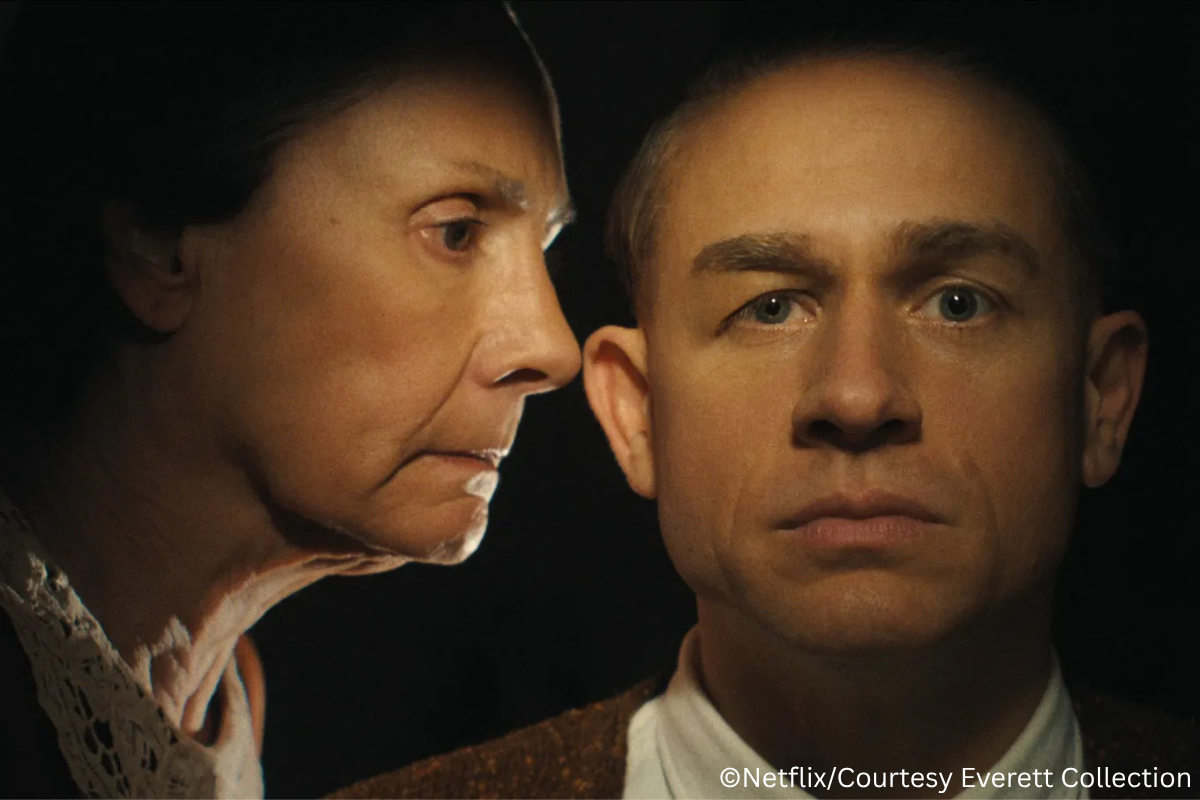Netflix’s latest entry in its Monster anthology, The Ed Gein Story, takes viewers into one of the most disturbing and psychologically complex chapters in American crime history. With Charlie Hunnam as Ed Gein, Laurie Metcalf as his domineering mother Augusta, and Suzanna Son as the haunting Adeline, the series dives deep into the mind of a man whose crimes inspired Psycho, The Texas Chain Saw Massacre, and countless other horror classics. Directed primarily by Max Winkler and created by Ryan Murphy and Ian Brennan, the series refuses to rely on shock value alone — it’s an ambitious blend of visual artistry, social commentary, and unsettling humanity.
Reimagining Horror Through a Modern Lens
Ryan Murphy’s vision for The Ed Gein Story wasn’t just to tell the tale of a killer; it was to question who the real “monster” is. Winkler recalled Murphy’s challenge to the creative team: Is the monster Ed himself, his mother, the culture that sensationalized his crimes, or the filmmakers who immortalized him through art? That question became the heartbeat of the entire production.
Cinematographers Michael Bauman and Carolina Costa gave the show a divided visual identity. Bauman’s work drew inspiration from Capote and Days of Heaven — evoking the bleak vastness of rural Wisconsin, where isolation itself becomes the villain. Costa, who shot the “Texas Chain Saw” sequences, leaned on grainy 16 mm textures to give the Texas-inspired scenes a feverish realism. Together, their work merged the grotesque and the poetic, making each frame feel like a reflection of Ed’s fractured psyche.
The Psycho Shower Scene — Revisited
One of the show’s most talked-about sequences is the reimagining of Hitchcock’s Psycho shower scene. Instead of recreating the classic frame by frame, Winkler’s version amplifies the horror — not just visually, but morally. The scene asks the audience to consider the ethics of turning real-life violence into entertainment. Winkler noted that Hitchcock himself became “the monster for bringing this into movies that were not like that before,” adding that the sequence forces viewers to face their own complicity as consumers of macabre fascination.
Actor Joey Pollari, portraying a young Anthony Perkins, adds another layer of tragedy to the recreation. Winkler pointed out that Perkins, struggling with his own sexuality and a repressive Hollywood culture, embodied the same loneliness that haunted Gein — linking the film industry’s treatment of outcasts with the killer’s own isolation.
The Emotional Toll on Cast and Crew
Charlie Hunnam’s portrayal of Ed Gein is both chilling and fragile. Winkler revealed that by the final weeks of filming, Hunnam had lost 40 pounds and was emotionally exhausted from living inside Gein’s mind. His performance during Ed’s diagnosis scene in Episode 7 — filmed in a single take — became one of the season’s emotional peaks. Winkler decided not to shoot another take, saying, “We didn’t need to go again. You could see everything he had been through in that moment.”
The crew also endured the brutal Chicago winter, filming in temperatures as low as -16 degrees. Despite the conditions, Winkler said the authenticity of the snow and the biting cold became part of the show’s aesthetic — a reflection of Gein’s emotional frost and detachment from humanity.
A Monster Made by Isolation and Abuse
What separates The Ed Gein Story from typical true-crime dramatizations is its attempt to understand the roots of monstrosity. Murphy and Brennan explore Ed’s psychological deterioration not as an excuse, but as an exploration of generational trauma and mental illness. Winkler shared that his empathy for Ed grew as he researched the abusive environment and profound loneliness that shaped him.
“The dehumanization of human beings is where we get into real trouble,” Winkler explained. The show’s underlying question — whether evil is born or made — lingers long after the final episode. The series does not absolve Gein but compels viewers to see the tragedy behind the terror.
Breaking the Fourth Wall — Confronting the Audience
One of the boldest creative choices comes when Hunnam’s Ed looks directly into the camera and tells the audience, “You’re the one who can’t look away.” This fourth-wall-breaking moment turns the lens back on the viewer, asking: Are we the monsters for finding fascination in this kind of horror?
Winkler says that moment encapsulates the entire thesis of Monster. It’s not just a horror story — it’s a cultural critique of how society consumes violence, profits from it, and packages it as entertainment.
The Finale — A Mother’s Approval
The final scene, where Ed sits beside his mother on the porch, wasn’t in the original script. Winkler improvised it during reshoots in Los Angeles, choosing to end with Laurie Metcalf softly saying, “Only a mother could love you.” That line became the emotional core of the series — both haunting and strangely tender. It encapsulates the twisted love that drove Ed’s entire life, and the eternal craving for validation from an abusive parent.
The finale’s “All That Jazz”-inspired sequence merges surrealism with tragedy, as Ed faces the consequences of his actions in a nightmarish musical number. It’s the show’s way of reconciling spectacle with morality — an acknowledgment that, for all its darkness, the story is also a reflection of our culture’s obsession with monsters.
Redefining Empathy in True Crime
Monster: The Ed Gein Story is not an easy watch, nor does it aim to be. It forces audiences to examine how empathy and revulsion coexist when we confront real evil. Winkler admits he still struggles to feel compassion for some characters, but his understanding of trauma and mental illness has evolved through this project.
The show doesn’t glorify Gein — it dissects the machinery of fascination that made him infamous. It asks why stories like his keep resurfacing, and what that says about us as a society that finds horror both repulsive and irresistible.
%20(4).png)





.png)
.png)
.png)
